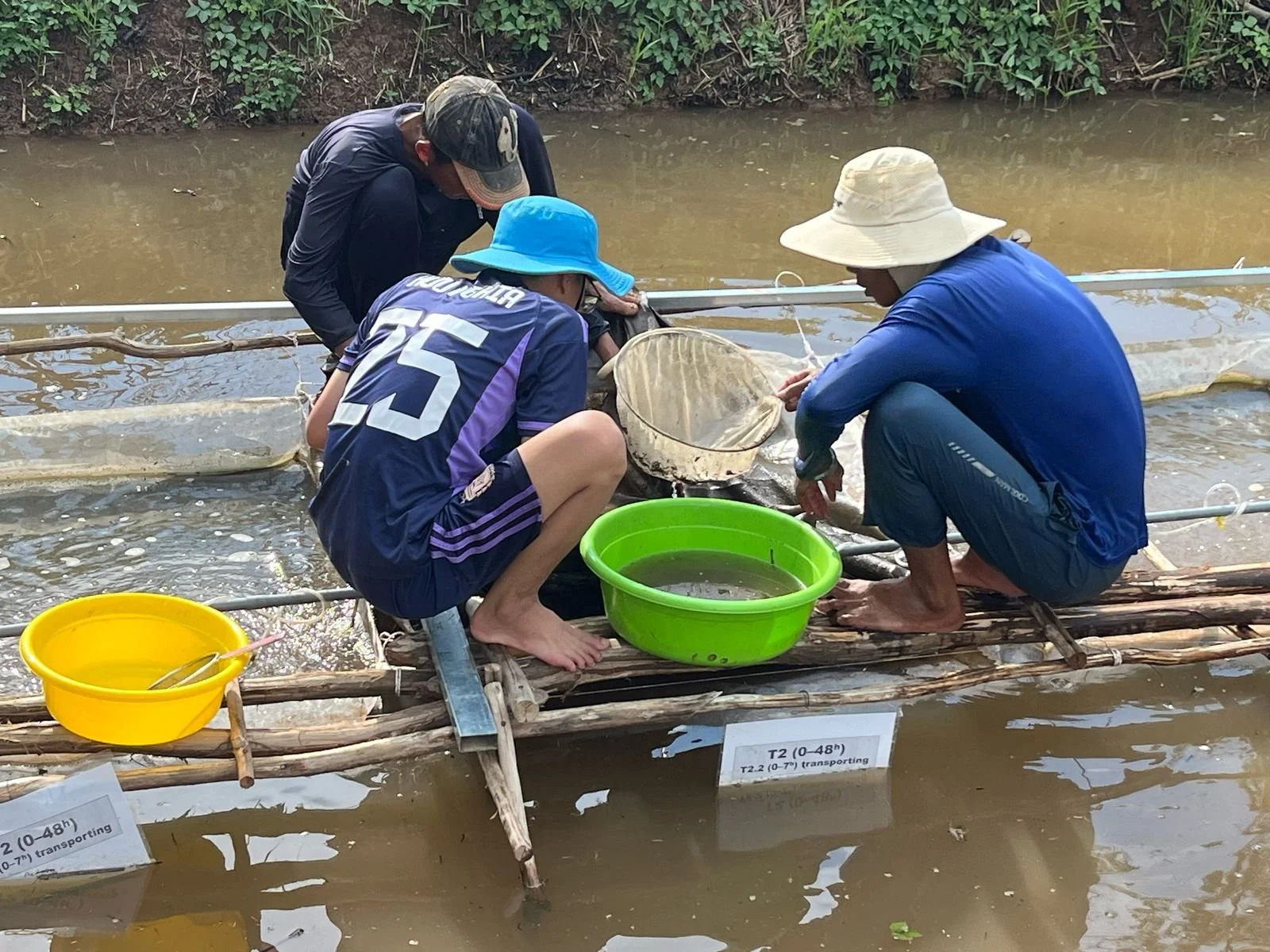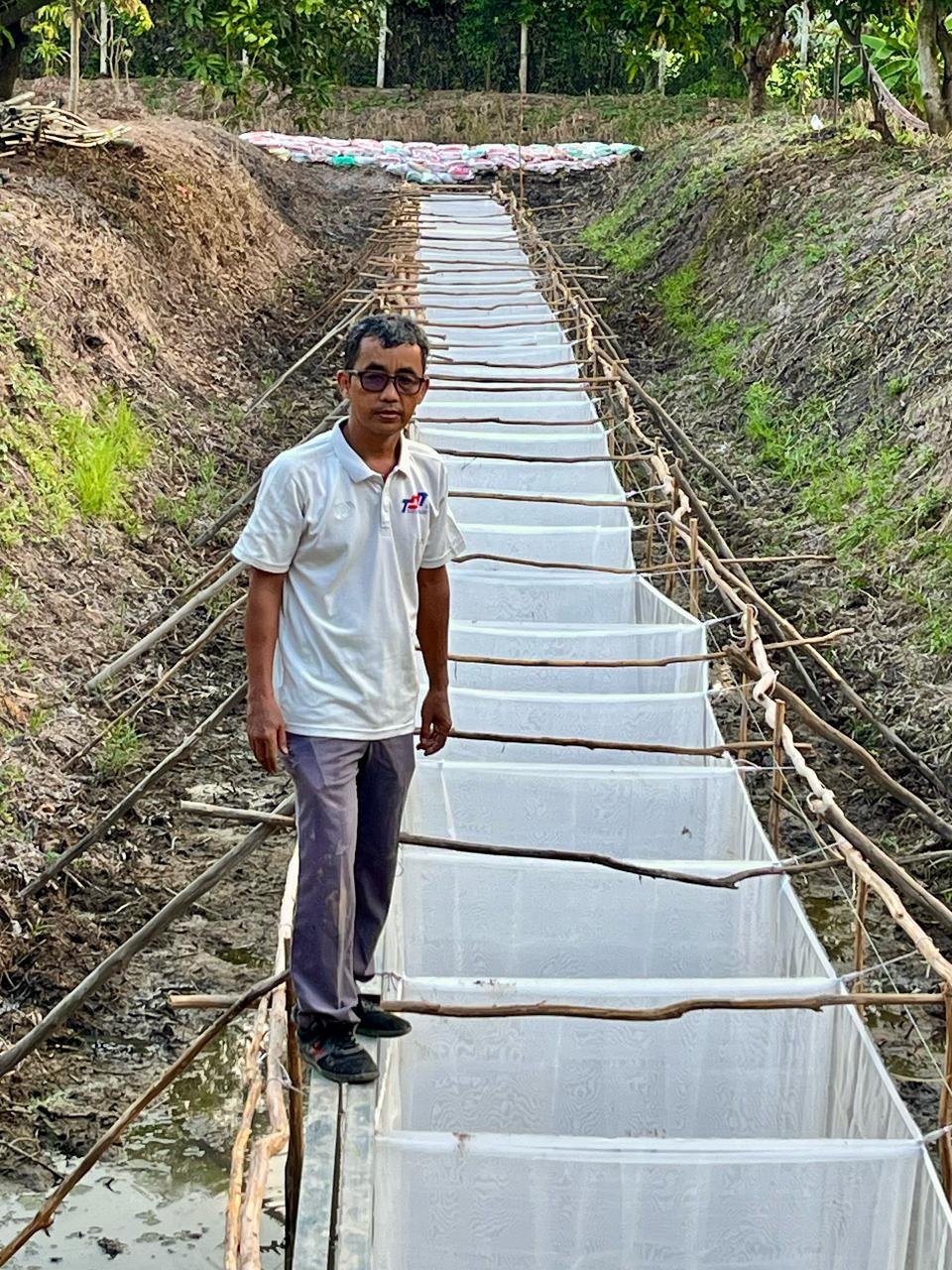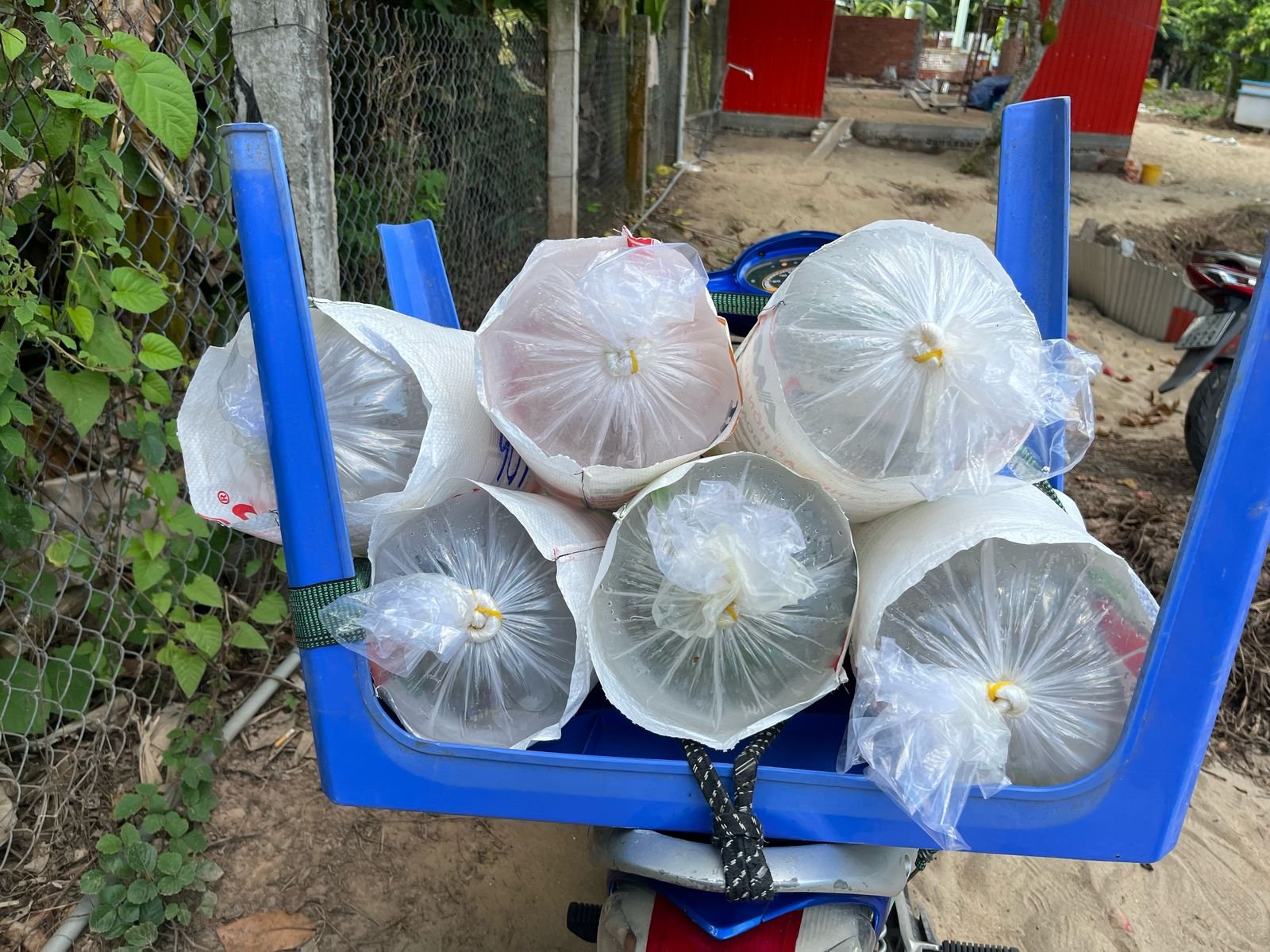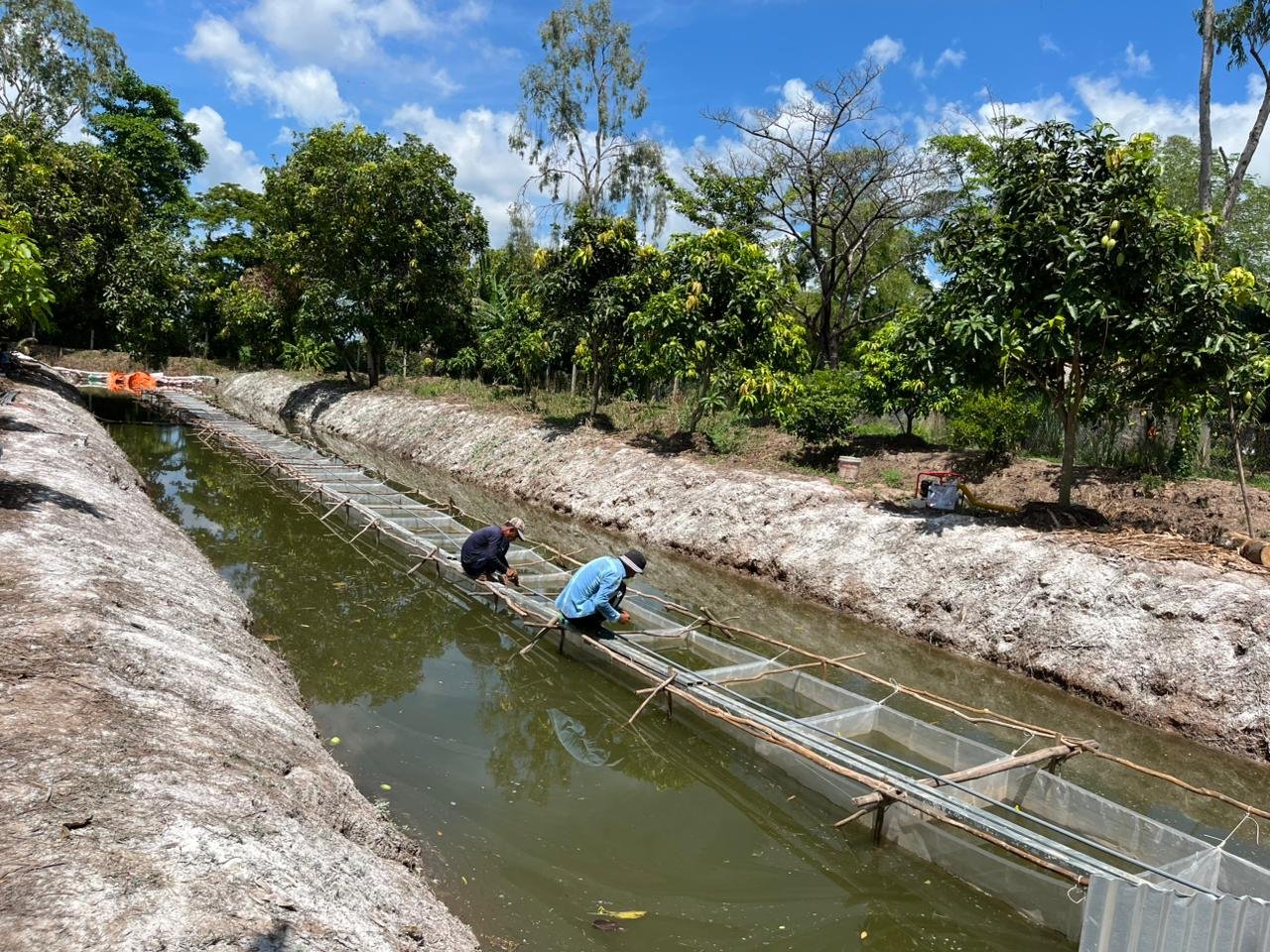Dr Chau Thi Da during construction of the pond hapas
A team from Ton Duc Thang University in Vietnam, led by Dr Chau Thi Da is working in cooperation with the Research Centre of Aquaculture Seed Production, Department of Agriculture and Rural Development of An Giang Province on factors affecting pangasius fry welfare and survival during transport from hatchery to farm.
The project has two main components, the first being a survey of commercial producers to document current practices and farmer experience. The second component is a series of experimental trials involving transport of larvae/fry at different ages and for different lengths of time. The fish are then cultured in hapas in a pond for 12 to 15 days to assess growth performance, survival rates and final yield.
Students examining the fish at the hatchery
This experiment aimed to evaluate the optimal rearing duration of fish larvae before transportation to improve welfare and survival outcomes. Three treatment groups were established based on the age of the larvae at the time of transport: 1 day, 2 days, and 4 days post-hatching. Each treatment was replicated three times to ensure reliable data.
Larvae/fry ready for transport in oxygenated bags by motorcycle
After the designated rearing periods, the fry were subjected to different transport durations: 3, 5, 7, and 10 hours under controlled conditions using oxygenated plastic bags, with a density of 80,000 - 100,000 larvae per 5 litres of water. During early development, the larvae were initially fed Moina sp. for three days, after which a commercial powdered feed was introduced. Water quality parameters were carefully monitored throughout the transport process and on a daily basis in the rearing (hapa) earthen pond to assess environmental impacts on fry health and survival.
The pond hapas used to assess performance after transport
Students from An Giang University and technical staff from the Research Centre of Aquaculture Seed Production have also been involved, helping with the experimental work. The results will be reported here as soon as they are available.
Students examining the larvae at the hapa site





